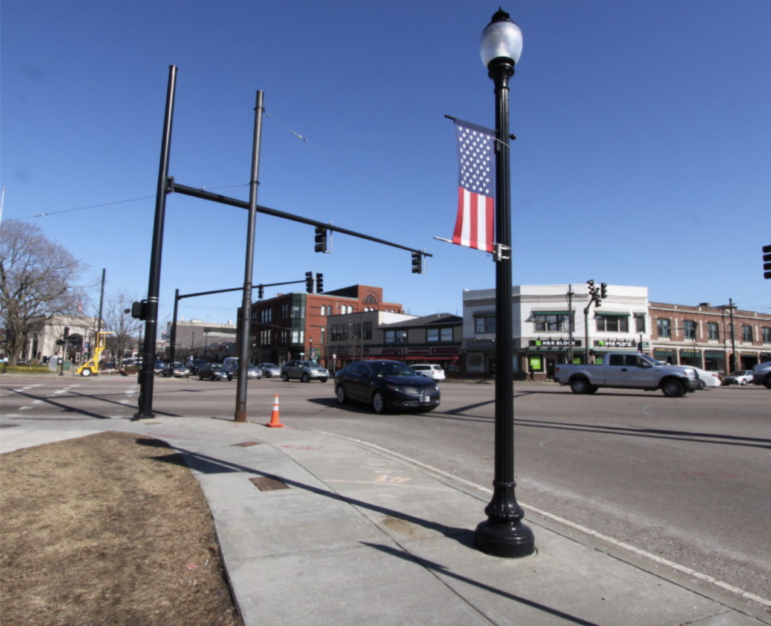
Part 10: Change is Inevitable. Growth is Optional. (John Maxwell)
By Linda Scott
Watertown Resident
Soapbox Alert:
There are different definitions for the word “Growth.” In its simplest terms, it means getting bigger. But there are other, less quantitive and more qualitative definitions, more subtle meanings to the word.
For instance, if you’re talking about growth in a human being, it’s more than the measure of their height or weight. It’s things like growth in patience, empathy, knowledge, skills. Those and more are all measures of a human being’s growth. So, too, I believe, there are more measures of a community’s growth than its population and its ability to generate income.
Change. We’ve explored what the Delta has seen of it for the past 400 years. It has experienced, most likely, more than most American town centers have experienced.
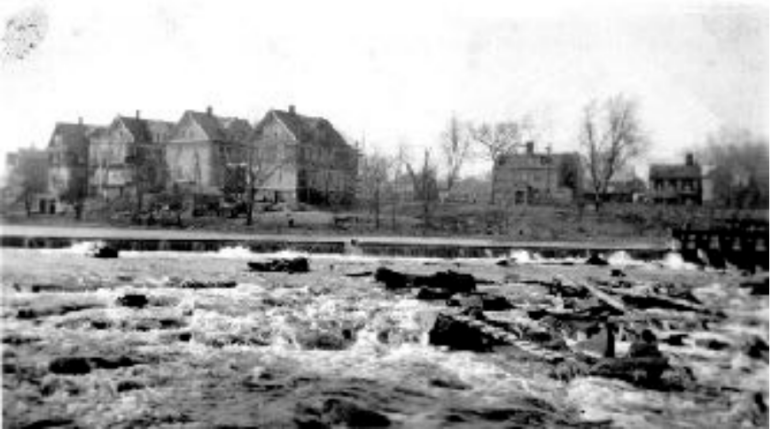
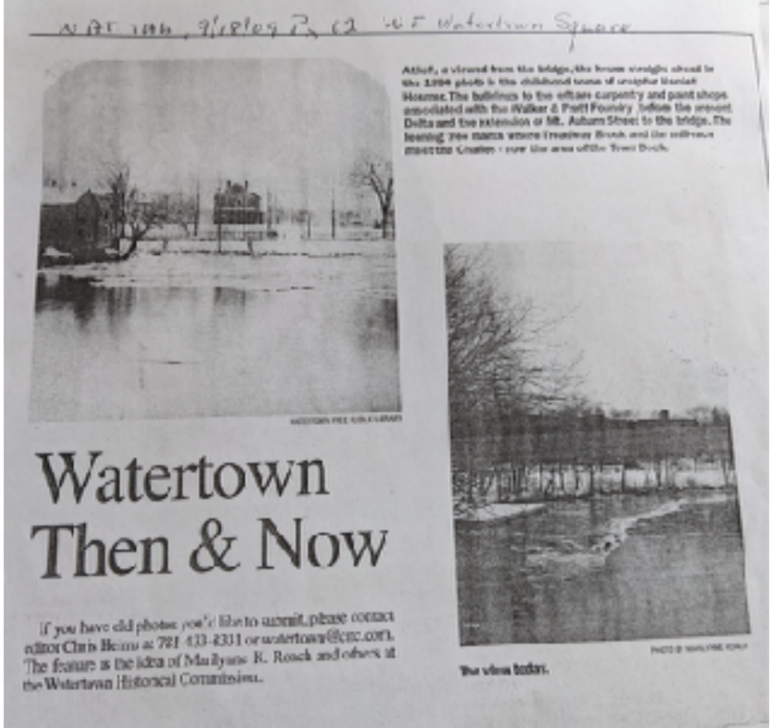
And now, we seemingly face one of our most difficult challenges: How do we change while continuing to grow as a cohesive community? We’ve seen through the years that we’ve always had a dichotomy in our view of ourselves as a town and now as a city.
This is a quick review of the changes that have happened since the Delta transformation in the 1920’s. I’ve gleaned this from a random set of old news clippings in the Watertown Library. Those of you who’ve lived through these changes, please feel free to add to or correct this information.
Since the 1920’s there have been other very large attempts to rein in traffic in Watertown Square, the one constant in our community.
We have to remember that we in Watertown are in some kind of traffic “sweet spot.”
As someone wryly commented to me in the 1980’s, “Sooner or later, everyone in the world passes through Watertown Square!”
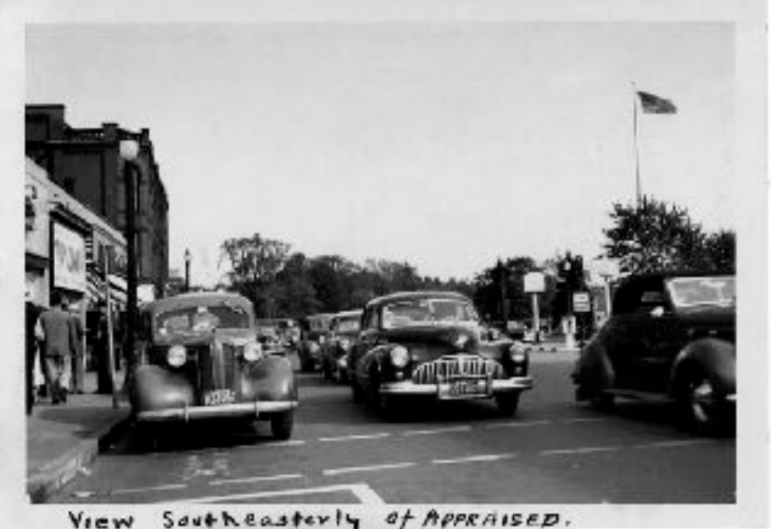
As early as the 1820’s, one of our historians was mentioning that traffic was a problem. One of
the Metropolitan Park Commission’s goals in the early 1900’s was to relieve traffic congestion in
Watertown Square.
The 1970’s
In a July 12, 1984 Watertown Press article entitled “Timely study of change to premiere on CabletTV, ” it is mentioned that “Mr. Burke (Charles Burke, the historian), points out that the plan of about 10 years ago (the TOPICS program), designed to relieve traffic congestion, had made the Square worse, in his view.” I was unable to find a description of the TOPICS program.
The 1980’s
A Town official: “We have a rotary, and it’s not working!” And to that end, Sasaki was contracted to “revitalize” our square.
Watertown Press 4/19/1984: “Groundbreaking ceremony held for Watertown Square”:
Standing on the Delta during the ceremony, Senator Bachrach said, “We risked our lives to get here—but hopefully that will be improved.”
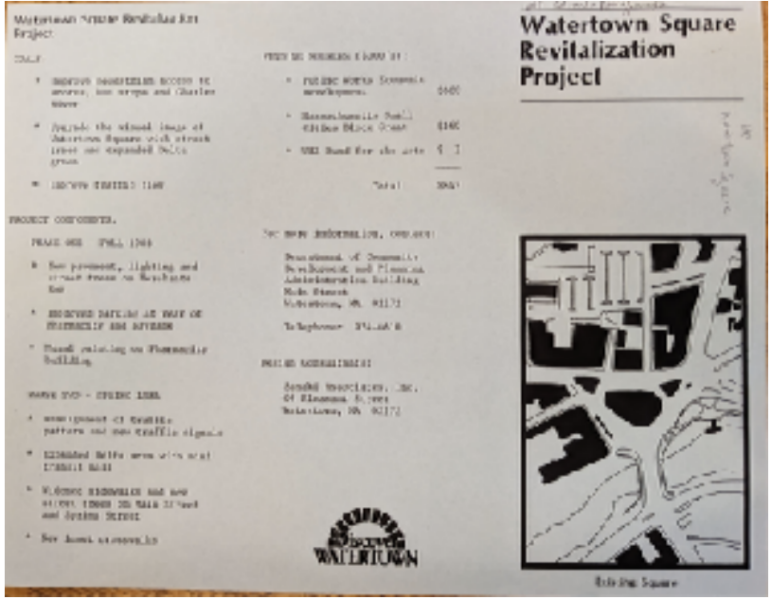
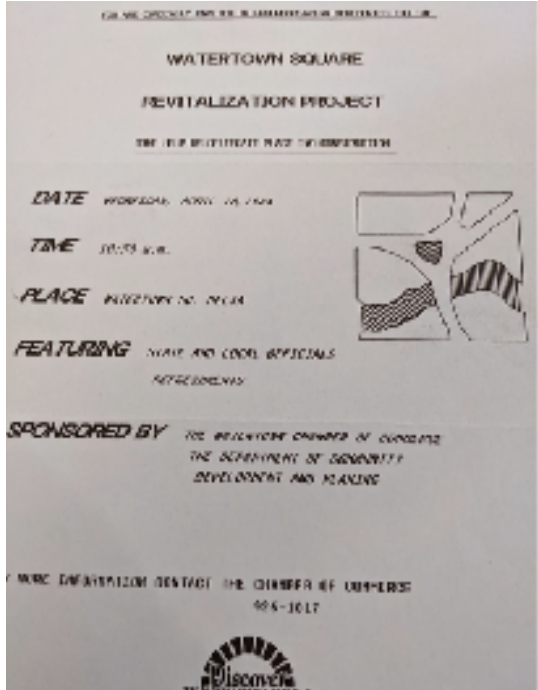
What was Sasaki’s goal? In this same Watertown Press article, Stuart Dawson, principal with Sasaki Associates and also a Watertown resident, I believe, said: “Great cities all have a great physical center, a heart.” He said that Watertown “had a great river, a great location and a great people, but does not yet have a heart, a central place for urban activity. This project is the first step and a giant step, and it is my dream that someday, on a fine spring day, people will say, ‘Let’s go to Watertown Square.’”
In 1984, it was estimated by Gerald Marquis, director of the Watertown Department of Community Development and Planning (DCDP), that there were 65,000 cars passing through Watertown Square daily.
How were Sasaki and Watertown planning to do this?
- Eliminate the Rotary around the Delta.
- Enlarge the Delta by about 30% to make it a traditional town common, a parklike setting that
is pleasant for sitting and relaxing or for public events. - Redesign and improve the transit mall at the Instrumentation Laboratory and improve the
existing bus stop, including new bus shelters. Move the taxi stand from Spring Street to the
Delta.
“Most significant aspect: land now dominated by the automobile will be reclaimed for pedestrians, and that the new traffic patterns, which eliminates the rotary traffic around the Delta is safer and more efficient than the existing situation in which cars have to weave past each other.”
The plan was off to a good start, but there were some complications that popped up along the way.
1985
Project Conclusions: Watertown Press January 3, 1985. “Watertown Square revitalization” The project ended in November 1984, with few things like planting, etc. put off until spring.
Complaints: long delays between ripping up all of sidewalks and their replacement
Lack of signs showing alternate parking
Pedestrian hazards from construction
General lack of effort to get things done quickly
Final Conclusion: “Some feel that the accomplishment of the project goal “improved traffic flow” is a matter of debate — but, equally, dire predictions of traffic disaster have failed to materialize.”
1998 to 2004
Then, around the late 1900’s, early 2000’s a new initiative was planned, this time with the Cecil Group and Bayside Engineering. These engineers proposed the “Big Delta” plan …“expand the area’s green park area, or delta northward, narrowing Main Street to two westbound lanes, making the crosswalk much shorter for pedestrians and creating new on street parking …”
“The presenters portrayed the relatively low traffic region created by the expanded delta and the two-lane section of Main Street as a relative haven for pedestrians.”
Watertown Tab, 3/1//2001: “Big Delta plan faces criticism.”
“A plan for the Square is facing criticism as Square Study Committee members have begun to realize that implementing proposals to develop a more user-friendly area would cost millions of dollars and take years to implement.”
“The Big Delta plan proposed by the Cecil Group and Bayside Engineering firms hired to study the square, includes altering the delta, reconfiguring traffic, replacing the Galen Street bridge and relocating the bus-stop area.”
“Some [residents and officials] said that the Big Delta plan – previously endorsed by the commission – shows that such improvements as narrower crossings and the installation of bicycle lanes are impossible without worsening traffic problems, or that the consultants were not up to the task of finding a solution.”
“The committee didn’t want to see nothing happen as far as improving Watertown Square, for the five and ten years taken to get the whole scheme implemented. They proposed the town move forward with an initial phase of improvement that can be built in a more timely and cost-efficient manner.”
A description in the Watertown Tab 10/1/04: ”the improvements are mainly cosmetic, included are sidewalks; updated pedestrian crossings; improved crossing surfaces and signals; and new streetlights, benches and trash receptacles.”
The aftermath of this project (Globe West 10/17/04):
“Sidewalk work update: Street and sidewalk renovations in Watertown Square are back on track. New sidewalks installed this summer along Main Street had to be ripped up because they sloped too much and did not meet ADA standards.”
There were numerous news articles with titles like this: “Square crosswalks still leading sightless into danger.” Watertown Press 10/14/04. (A thing to remember if/when we make more changes to the Square … consult with Perkins and other advocates for other folks with disabilities to make
change safe).
2007
Parking Study set for Square (Watertown Tab 3/23/07)
“Driving through Watertown Square when it’s congested, you probably have a better chance of seeing pigs fly over Town Hall than finding a good parking space. But town officials hope a $41,400 study will help solve that problem.”
And so it goes…
2023
We’re about to embark on a new (you guessed it) Watertown Square study. Our current goal, it seems, is to magically densify the Square while eliminating the traffic.
Here’s Watertown News’ reporting on this study:
It’s both exciting and terrifying. But change seems to be Watertown’s destiny. Those of us who have lived in Watertown for a long time have seen change, lots of it. Some was good and some was questionable. The Delta has seen even more.
Please join us at these meetings. Voice your opinions and concerns, because this is YOUR Watertown! (NOTE: On Sept. 12, City Manager George Proakis announced the dates of the Watertown Square redesign, with a kick-off meeting scheduled for Oct. 17, and a three day planning charrette is planned for Nov. 28-30).
As I mentioned in a previous letter, our citizens are busy contributing to the process, but we need even more of you! At the last developer’s meeting, for 10-30 Manley Way, a group of about 50 citizens spoke up so clearly that the developer has postponed its plans for a month to rethink them. Here’s the link to that inspiring meeting: http://vodwcatv.org/CablecastPublicSite/show/2727?seekto=5750&site=3
Change is inevitable. Growth is optional. Come help Watertown grow.
Linda, you are to be commended for this series of articles on the Delta and Watertown Square. Undoubtedly you spent a huge amount of time doing the research and presenting it to us in a serious but also humorous way.
This area of Watertown has been through an amazing number of changes since our founding and as time goes by, there don’t seem to be easy answers to revitalizing it or figuring out traffic issues. The town/city has spent a great deal of money with studies that have not fixed a lot. I certainly hope this new study comes up with new and creative approaches, but sadly I have my doubts.
Watertown is a pass-through city for many people from many other cities. People are always going to take the more direct route to get from point A to point B and Watertown Square is the main connection to do that. Reducing traffic seems to be a lofty goal now that more people are being encouraged to go back to their offices or business locations to work on a more regular basis. With people buying and renting houses/apartments further away due to the high costs of housing here, cars are a necessary evil, and public transportation and bicycles aren’t going to work for many to get to and from work and live their lives.
Hopefully the Watertown Square study will find ways to attract businesses that will thrive and that people will want to support and visit to make it an exciting part of our city. With the high rents being charged in existing buildings and proposed new ones, this makes for a difficult business climate for small businesses to be profitable. Many other cities are losing those businesses due to rent increases and/or lack of adequate parking. Let’s hope that landlords in our city don’t force out established businesses or discourage new ones due to greed; let’s hope they want to make Watertown a great place for all.
It’s important that Watertown residents participate in the upcoming Watertown Square meetings in October and November. More ideas are better for making good changes; don’t rely on others to make decisions for you. Now is the time to come forward or forever hold your piece.
We used to say, Be There or Be Square. Now we say Be There For Your Square!
It seems to me that there are possibilities for pedestrians and bikers to be able to travel ether underground or on pedestrian / biker overpasses to get to different sides of the square.
Both of those approaches are incredibly expensive and quite bad for bikers and pedestrians. It also cements this idea that Watertown Square is meant for cars and everybody else is a secondary considerations. We value the free flow of cars over the people outside of a car. Watertown Square also has at least 5 different roads you need to cross… that essentially amounts to a whole raised roundabout with bike accessible ramps at many different places.
L.A. tried underground tunnels in the 1920s and 30s to avoid having to stop vehicle traffic for pedestrians. They ended up closing off nearly all of them. People also simply didn’t like using them and didn’t feel safe. Nobody wants to literally go underground just so they don’t inconvenience cars.
My perhaps unpopular opinion is that we need to deprioritize cars. We’ve already literally given away all of Watertown Square to cars. I’d describe Watertown Square as something closer to a highway interchange with a bunch of parking lots. Car noise and pollution permeate the whole area. The only thing we could do to make it more car friendly is to not let pedestrians cross the street anymore. Even seasoned bikers like myself avoid the square. If I must go through there I bike on the sidewalk which pedestrians don’t like. The current approach simply isn’t working for anybody.
Yes, tunnels could quickly become unsafe. I have seen them overseas and they tend to become a hangout for undesirables.
We need to take Watertown Square in the opposite direction from being a highway interchange (which is an apt description). It is not an environment that is welcoming and comfortable if you are not in a car (even then, not so much).
Nothing will succeed very well in the Square unless we solve this problem. Watertown Square must move toward a more human scale.